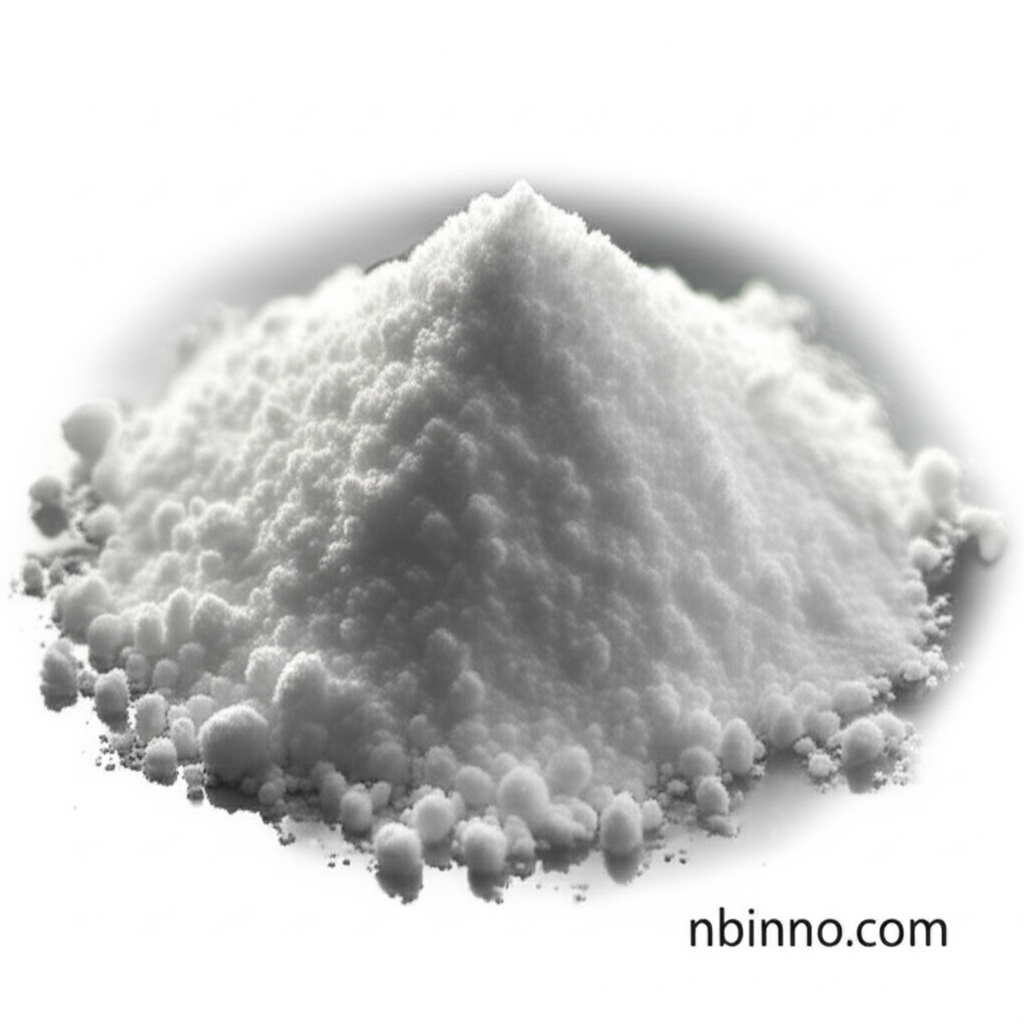Ethambutol Dihydrochloride (CAS 1070-11-7): A Comprehensive Guide
Explore the properties, applications, and research significance of this key antitubercular agent.
Get a Quote & SampleProduct Core Value

Ethambutol Dihydrochloride
Ethambutol Dihydrochloride is a vital antitubercular antibiotic that functions by inhibiting the synthesis of the mycobacterial cell wall. Its primary mechanism involves inactivating arabinosyl transferase, an enzyme crucial for mycolic acid transport, thereby increasing bacterial cell permeability and vulnerability.
- The Ethambutol dihydrochloride mechanism of action involves targeting arabinosyl transferase, a key enzyme in mycobacterial cell wall synthesis. This inhibition is fundamental to its efficacy as an antitubercular agent.
- As an antitubercular antibiotic, Ethambutol Dihydrochloride plays a critical role in combination therapies for tuberculosis (TB). It is essential for effectively clearing the infection.
- The Ethambutol dihydrochloride arabinosyl transferase inhibitor activity makes it a valuable tool in antimicrobial research. Understanding this interaction helps in developing new treatment strategies.
- Ethambutol dihydrochloride dosage and side effects require careful consideration by healthcare professionals. Proper management ensures optimal treatment outcomes and minimizes risks.
Key Advantages
Targeted Cell Wall Inhibition
Ethambutol dihydrochloride effectively disrupts the formation of the bacterial cell wall by inhibiting essential enzymes, a critical aspect of its antitubercular antibiotic efficacy.
Foundation for TB Therapy
Its role as a primary agent in TB treatment, often in conjunction with other drugs, underscores its importance in combating the disease. Exploring Ethambutol dihydrochloride dosage and side effects is crucial for patient care.
Valuable Research Tool
The compound is indispensable for researchers studying Ethambutol dihydrochloride mechanism of action and developing novel strategies to overcome antimicrobial resistance.
Key Applications
Tuberculosis Treatment
The primary application of Ethambutol Dihydrochloride is in the treatment of tuberculosis (TB), often used in combination with other drugs to achieve complete remission. Understanding Ethambutol dihydrochloride antitubercular antibiotic properties is key.
Antimicrobial Research
Researchers utilize Ethambutol Dihydrochloride to study bacterial cell wall synthesis and to investigate mechanisms of drug resistance, leveraging its role as an Ethambutol dihydrochloride arabinosyl transferase inhibitor.
Biochemical Assays
It serves as a crucial compound in biochemical assays to examine the interaction between the chemical and its target enzymes, providing insights into Ethambutol dihydrochloride mechanism of action.
Development of New Therapies
The compound is instrumental in research aimed at developing new anti-TB drugs and overcoming existing resistance patterns, informed by studies on Ethambutol dihydrochloride dosage and side effects.
Related Technical Articles & Resources
Why Choose Us?
Leverage our expertise and state-of-the-art infrastructure to accelerate your journey from discovery to commercial success.
Global Experience
With 20 years of R&D, manufacturing, and sales experience, we proudly serve clients across 60 countries and regions worldwide.
Advanced Facilities
Our in-house R&D laboratory, pilot platform, and large-scale production workshop are equipped to meet the audit requirements of global customers.
Seamless Scalability
We facilitate a perfect transition from small-scale lab requirements (grams) to full commercialization (hundreds of tons).
